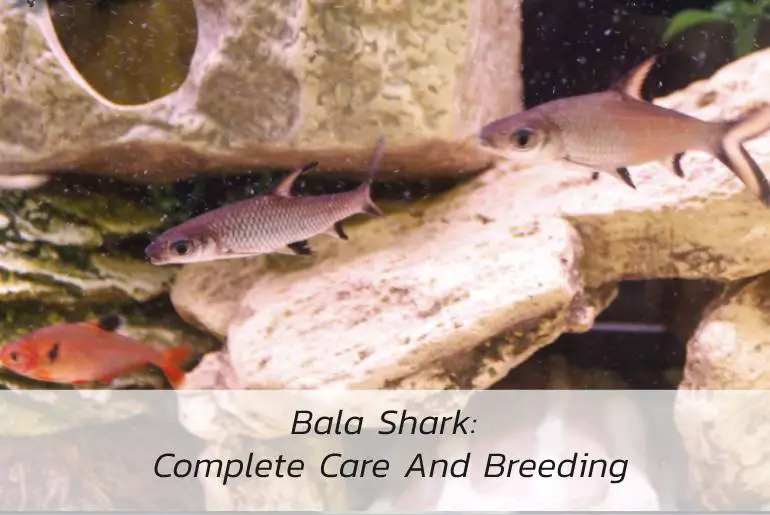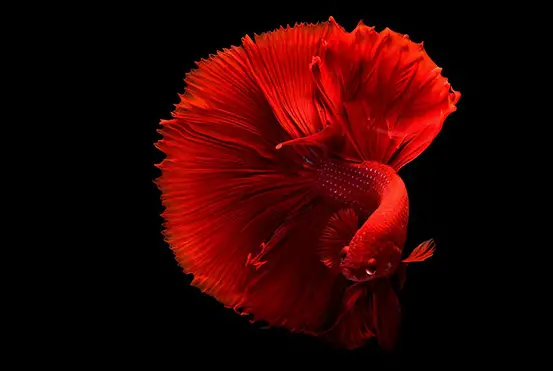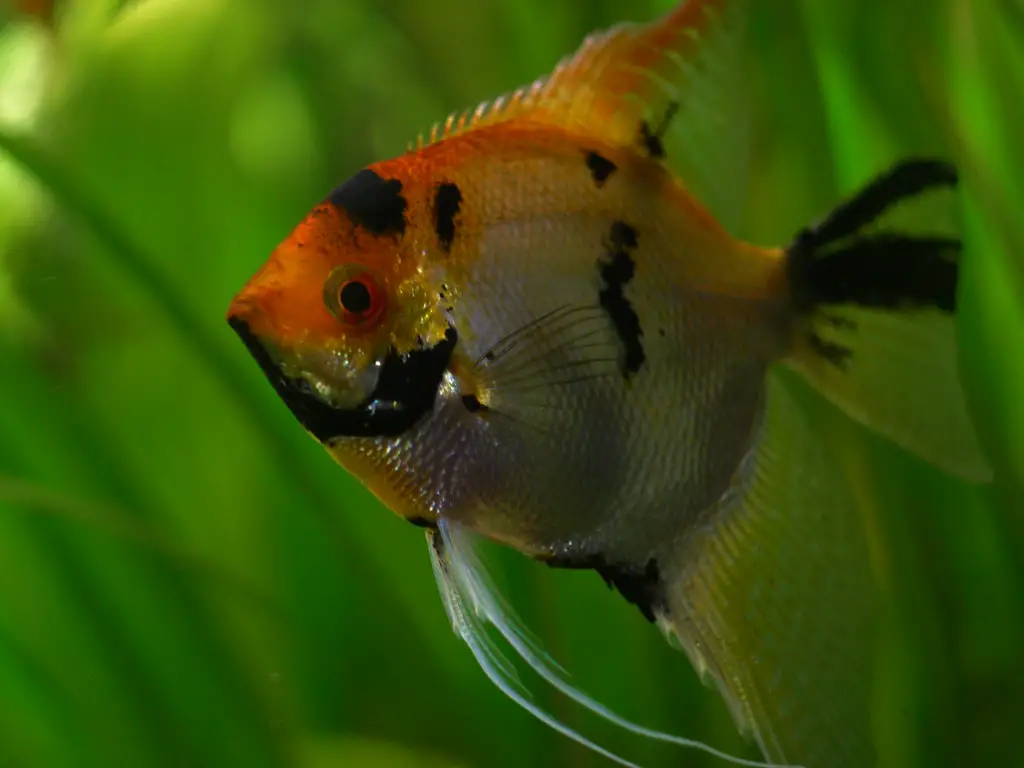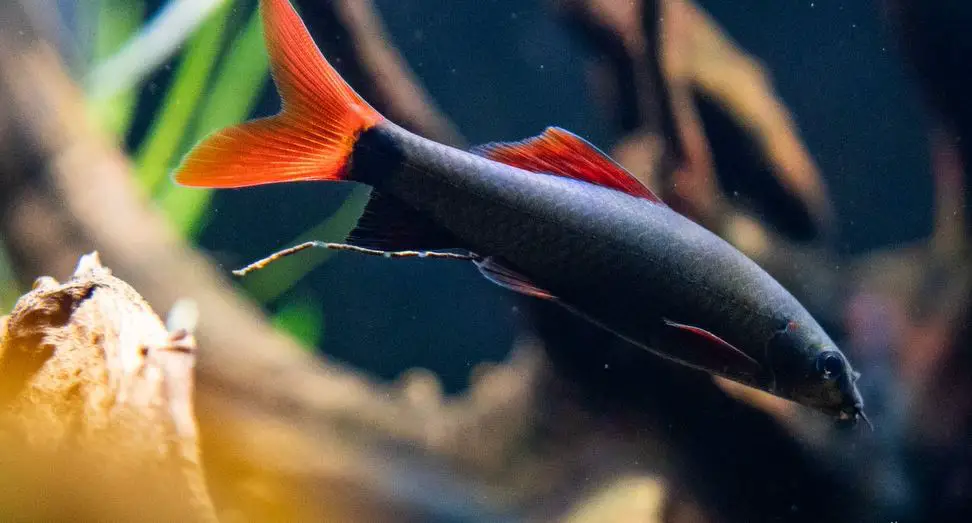Owning a large, attractive, peaceful, and calm fish is one of the dream desires of a fish lover. Secondly, the fish keepers want to add charm and liveliness to the tank. For this, the perfect fit will be a beautiful Bala Shark! As a fish hobbyist, you probably are aware of the great Shark. But have you heard of Bala Shark? Are they actual sharks? The query seems quite appropriate.
Bala shark is not the real Shark, as Sharks do not live in freshwater. However, having a long, pointed dorsal fin resembling a Shark, the fish got its name: Bala Shark. The silvery-gray color of the fish makes them attractive and tempting.
Moreover, the calm and peaceful nature of this fish attracts everyone. It becomes an ideal addition to your communal tank because of its schooling nature.
For more details about Bala Shark and its complete care, tank setup, and breeding, this article might help you. Let’s proceed then.
Bala Shark: Overview
Commonly known as a member of the carp or minnow family, Bala Sharks belong to Cyprinidae. They are freshwater fish known by various names such as Tricolor Shark, Silver Bala, Silver Shark, and Tri-Color Minnows.
Origin
Southeast Asia is the place of origin of the Bala Sharks, mostly from Sumatra, Borneo, and the Malayan Peninsula. However, some people even suggest that the fish originated from the Chao Phraya: basin in Thailand and the Mekong basin.
Natural Habitat
Mostly, Bala Sharks are freshwater fish found in freshwater rivers and lakes. They are found in warm and densely vegetated waters in the wild. These fish prefer muddy or pebbly substrate.
In addition, Bala Sharks prefer fast-flowing waters and love adequate space in their natural habitat. Likewise, they swim in the midwater regions in their natural habitat. Likewise, they are found in medium-sized rivers and lakes.
Distribution
Bala Shark originated from Southeast Asia and is distributed in large and medium-sized rivers and lakes. They are widely found in the rivers of Thailand, Borneo. Similarly, the Malayan peninsula inhabits them.
More About Bala Shark
Besides distribution and origin, you might want to know about its size, availability, lifespan, etc. For this, we have separately mentioned the details. So please have a look at it.
Size
If you are fond of keeping large fish in your community tank, the Bala shark is one of the options. They are quite large fish that can grow up to 14 inches.
This is the maximum length it can grow. However, your fish grows 10-12 inches on average.
Moreover, the size depends on the tank’s environment, diet, nutrition, and other external factors. Therefore, you must provide a comfortable environment for the increment in the size of your fish.
Availability
The Bala shark is one of the endangered species on the verge of extinction. The aquarium trade also aids in their endangerment. They are completely extinct from some areas, which was generally their area of origin.
Unlike other breeds, these are rare species and thus are not readily available at the local fish stores. However, some well-known and authentic online stores do sell this breed. Hence you can easily buy from there.
Appearance
Bala shark has an elongated and torpedo-like body structure, with yellow or gray long pointed dorsal fins edged with black. This body structure and shape of fins make them look like a shark.
Hence, they are called false sharks too. Gray and silver color on the body of your fish make them attractive.
Lifespan
When you provide enough care and maintain the needs per your Shark’s requirements, your fish will live for ten years which is the average life expectancy of Bala Shark worldwide.
However, there are many cases where this fish survived more than ten years and even less.
This depends on the gene, tank setup, filtration system, diet, environment, etc. Thus your Bala Shark might or might not live up to ten years; however, proper nurture aids in the life expectancy of your fish.
Price
The average price of Bala Shark ranges from $3 to $9, depending upon the availability of the fish. Bala Shark, native to southeast Asia, may lower the price in these areas. However, the price may vary depending upon size, age, location, and the quality of the species.
Sexual Difference
It’s not that easy to distinguish between a male and a female fish. However, a subtle way to point out a male and a female one is by observing the shape of their body.
Usually, a male is larger than a female and has a streamlined body. In contrast to this, the female Bala Shark possesses a smaller body and a rounded belly.
Social Behavior
Bala Shark is schooling fish, which loves to remain in a bunch. Therefore, you have to put a minimum of four Bala Sharks together for their social growth, ensuring ample space for mobilization. Moreover, six fish together goes pretty well.
Bala Shark is peaceful and does not harm its tank mates. However, it becomes aggressive when left alone. Therefore, don’t leave your fish alone in the tank as Bala Shark is a more social and needs companion.
Tank Mates
Your Bala Shark is a community fish and thus is okay with other breeds. However, I don’t suggest you keep crustaceans like shrimp and lobster with Bala Shark as your fish consumes them. Therefore, keep large to medium-sized fish which are peaceful and not aggressive.
Some include Tetra, Kissing Gourami, Clown Loaches, and Tinfoil Barbs. They are quite comfortable with your Bala Shark. The fish, which loves to be in a bunch and calm natured, often works well with Bala Shark.
You can even keep Rasbora, Blood Parrot Cichlid, Rainbowfish, and Common Pleco fish with your Bala Shark. If these are housed together, your fish doesn’t feel alone and becomes peaceful.
As a schooling fish, your fish would love to be in the company of its species too. So you can keep around four to six Bala Sharks together in your aquarium, providing enough space to move.
Tank Setup For Bala Shark
Setting up a tank seems tedious but has an enormous benefit. It helps in mimicking the natural habitat of your fish, ultimately making them happy. You should consider the following given points to set an ideal tank.
Tank Size
As you are not keeping a single Bala Shark in your tank, thus you need quite a big tank. You have to keep at least four to six sharks in a single tank; hence, I suggest you have a tank size of 120-150 gallons.
If you are adding more fish to the tank, make sure you increase the size of the tank. As an active swimmer, Bala Shark needs more space for its mobilization. Proper mobilization ensures the growth and development of your fish.
Tank Equipment
Some tank equipment is of utmost importance as they help maintain the natural habitat preferred by your fish.
Your Bala Shark is a tropical fish; hence, it requires a heater. You need to fit a heater to make the temperature favorable to your fish. Mocking the temperature makes them feel they are in their natural habitat.
Likewise, filters are a must for your tank. This is because it helps filter the waste products from the tank, eventually making water healthier by reducing the ammonia continent produced from the waste in the tank.
Moreover, you even need to fit a powerhead in the tank to maintain the current flow. As Bala Shark’s natural habitat is a medium to the large-sized river, they need a moderate flow of water current, which is possible through the application of a powerhead.
Some tank equipment that can help are:
- EHEIM NORTH AMERICA – JAGER HEATER 150W
- hygger Saltwater Tank Titanium Tube Submersible Pinpoint Aquarium Heater with Digital Thermostat
- Penn Plax Aquarium Cascade Canister Filter
Water Parameters For Bala Shark
To mimic the natural habitat, you need to consider the water parameters. In addition to copying the habitat, your Bala Shark remains happy, active, jolly peaceful, and calm once all its requirement is met.
I suggest you meet the following criteria, which will undoubtedly benefit you and your Bala Shark.
pH
Do you know that the acidity or basicity of water measured is pH? The high acid content in water hampers your fish. Hence, you must meet the pH measure. The suitability of pH for your Shark is 5.5 to 7.
You can even keep them up to a pH of 8. If you are in a dilemma to maintain the pH in your tank, ensure it through a pH test kit that is easily available in the market or even use the digital pH meter for your ease.
Temperature
Optimum temperate is necessary for your fish for its healthy development. An imbalance in temperature or fluctuation might affect the metabolism of your Bala Shark.
For each 18° F increase in temperature, your fish’s respiration rate increases twice the original rate, increasing the metabolism.
Likewise, your fish’s metabolism rate decreases at lower temperatures resulting in dullness and lethargy. Therefore, you should keep your fish at its native temperature, where it used to be.
To maintain the correct temperature, you can fit a water heater in the tank. The temperature at which you can keep your fish is 72° to 82°F.
Hardness
You should monitor the hardness of the water white setting up the tank for your Bala Shark fish. As different fish needs water varying in hardness, your Bala Shark is okay in the range of 5-12 degree of general hardness. However, most aquarists prefer the degree of 10 for their Bala Shark.
Water Filtration
The filtration system is another key factor you must consider while maintaining the tank. The filter is the most needed equipment in the tank, without which you might even lose your fish because of the toxins produced in the tank.
The waste product from the unutilized food or the poop of your fish develops ammonia in the tank, which becomes toxic in excess amounts.
The excess ammonia is reduced with the help of water filters; hence you need to keep a good quality water filter in the tank for your pet’s safety.
Water Current
Your Bala Shark is freshwater fish originating from medium and large-sized rivers. The water current of such a river is generally moderate; hence you need to maintain the moderate flow of current in your aquarium.
To imitate the flow of water like a river, you need to fit a powerhead in the tank from which you can easily set the water current to moderate. Again, this resembles your fish’s natural habitat.
Lighting
You have to maintain moderate or dim lighting for your fish as they strongly dislike being in bright light. Strong lights stress them out.
In addition, your fish might hide behind the plants or substrate in the presence of excess light. To make them comfortable enough, ensure moderate lighting in the tank.
Tank Decoration
Unlike other fish, your Bala Shark is not fond of tank decoration. Because they are an active swimmer, their major concern is enough space for swimming. If you wish to keep some plants in the tank, keep them in the periphery.
Floating plants are also great for the tank, which controls your fish’s jumping habit, and prevents them from encountering injury.
They are fine on the bare-bottom tank and even on the gravel or pebbles. Your fish does not have any issue regarding the decoration, but they need a company to swim in the tank.
Diet For Bala Shark
Bala Shark is an omnivore and thus accepts all food. The key point you should consider while feeding is the number of meals and protein content.
You can feed them thrice a day, depending upon your ease of timing. In addition, you must introduce a meat-based food often to meet their protein requirement.
The choice of food might differ from one Bala Shark to the other. However, you can try feeding the different plant and animal-based food listed below to know your fish’s favorite ones.
Plant-based Food
Plant-based food is rich in fibers that aid in digestion and gives satiety to your fish. Likewise, antioxidants present in plants enhance immunity in your fish.
Cucumber, peas, zucchini, spinach, spirulina algae wafers, lettuce, and watercress are some plant-based food that your fish devours.
Animal-based Food
Coming to meaty food or non-vegetarian food, your fish meets protein requirements through this food. In addition to this, minerals and vitamins present in animal-based food help your fish’s smooth growth and development.
Some of the meat-based foods your fish loves are mosquito larvae, daphnia, brine shrimps, bloodworms, tubifex worms, etc.
Regular same food makes your fish’s diet monotonous thus, remember to feed varied food to enhance appetite.
You can choose from the following:
- Omega one pellets
- Ocean Nutrition Instant Baby Brine Shrimp 0.7-Ounces (20 Grams) Jar
- Omega One Freeze-Dried Blood Worms, 0.96 oz
- 200 Live Daphnia by Aqua L’amour
- Hikari Bio-Pure Freeze Dried Daphnia for Pets, 0.42-Ounce
- Hikari Tubifex Worms Fish Food (0.7 oz.) [Set of 2]
Diseases In Bala Shark
Bala Shark normally does not encounter the diseases easily; however, the bacteria and protozoa sometimes attack them. They even show the symptom of dropsy. For more information and details, I have explained the diseases.
Dropsy
Dropsy is a symptom rather than a particular disease in which the accumulation of fluid in the fish’s body occurs. Moreover, the excess fluid in your fish body might indicate various other underlying diseases your fish has.
Dropsy gives a signal to indicate bacterial, parasitic infection, or liver dysfunctions in your fish. Therefore, you must take caution whenever you observe this symptom in your fish.
Ich Disease
Ich disease often is caused by the protozoa named Ichthyophthirius multifiliis. This protozoan invades freshwater fish in a tropical aquarium. Small white spots are prominent throughout the fish body, showing hiding behavior.
It is a treatable disease; hence you don’t need to worry much but ensure you boost your fish’s immunity by providing a healthy and timely diet.
You can prevent ich disease in your pet by quarantining any new plant, fish, or invertebrates you will introduce in the tank. Likewise, quarantine diseased fish to maintain the safety of other tankmates.
Breeding Of Bala Shark
Breeding your Bala Shark is slightly difficult compared to other fishes in your aquarium. It is because differentiating between the male and female Bala Shark is difficult.
You can only breed the fish after determining the sex of your fish. Let’s dive into the detail of the breeding process of the Bala Shark.
Sex Differentiation Of Bala Shark
It is recommended to determine the sex of your Bala Shark before breeding. Both the male and female Bala Sharks appear almost the same. Generally, the large with a streamlined body is male, whereas a smaller with a round belly is female.
They are difficult to distinguish when juvenile; thus, you have to wait until they start to show mating behavior. To ensure at least a male and female are present in the tank, keep a school of 4-5 fish such that two among the four can easily mate.
Preliminary Preparation For Bala Shark Breeding
Breeding the Bala Shark needs more preparation and effort. So, consider preparing a separate tank of about 55 gallons or even larger to facilitate breeding the Bala Shark.
Similarly, set the tank’s temperature between 72-82 degrees Fahrenheit. The temperature will provide an ideal environment for your Bala Shark to breed.
In addition to the tank conditions, also equip the bottom of the tank with special nets to spot spawning easily.
Likewise, do not crowd the tank with plants and allow the fish to swim freely. But, provide at least one plant in the center of the tank for a hiding place.
Moreover, install a sponge filter at the corner of the tank to keep the water clean. The sponge filter provides only the required amount of suction to clean the tank without putting the fry in danger.
Initiate The Process
After preparing the tank for the breeding process, move one male and female Bala Shark to the tank. As described by the fish breeders, the Bala Sharks dance around the tank before producing the egg.
Once the female produces the egg, she will scatter the eggs around the tank for a male to fertilize it externally.
It sounds shocking that your Bala Shark does not normally breed in captivity unless encouraged by injecting hormones to stimulate the process.
In addition, to facilitate the fertilization process, adequate filtration is necessary. The filtration equipment will provide current for the Bala Shark’s sperms to disperse and lay on the eggs.
After Fertilization
Once the sperm of the male Bala Shark lays on the egg, it is fertilized. The Bala Shark pays little or no attention to its young ones.
They don’t protect their new ones and leave them after spawning. Moreover, the Bala Sharks are known to eat their eggs and newly hatched fryling.
Thus, to prevent the destruction of fry by its parents, the mature Bala Sharks are moved to another tank after breeding. So, keep an eye on the breeding process and remove the parents as soon as the breeding is complete.
Moreover, after a few hours, remove the unfertilized spawn material to maintain the tank’s cleanliness. Likewise, after some time, renew about 30-50% of the water.
In addition, some fish feeders also recommend adding an antibiotic solution to the tank to keep the fry safe.
Hatching Of The Bala Shark Fry
After fertilization, small larvae are visible in the tanks within 24 hours. If the fertilization process is successful, in 3-4 days, small fry is visible in the tank. However, the breeding process was unsuccessful if you see no sign of fry after some days.
Thus, breeding your Bala Shark is not an easy accomplishment as the fish needs a large space to breed successfully. But, remember, if you bred and care for these fishes, they are joyful possession for your aquarium.
Care For Bala Shark Fryling
Caring for the fry is an important process as the new Bala Shark grow at different rates depending upon the nurture provided. The important points to be considered while caring for the fry are:
- Provide enough room for the fry to grow. If you feel the tank is congested, move the fry to another tank. The size of the tank affects the growth of the Bala Shark fry.
- Feed your fry with foods like newly hatched brine shrimps, ciliates, cyclops, and commercially available fry foods.
- Feed your baby Shark several times a day rather than a large amount in a single feed.
- Don’t overfeed the fry, as the leftover food will pollute the tank’s water. The contaminated water will eventually take the life of baby Bala Sharks.
FAQs
I have collected some of the queries about Bala Shark that you often encounter. So let’s have a look at it.
Is Bala Shark Useful For Your Aquarium?
Besides its joyful nature and beauty, Bala Shark is known to have a unique characteristic of predicting outbreaks in your aquarium.
Fish hobbyists claim Bala Sharks are known to rub their scales against the rocks of aquariums before an outbreak of ich. Thus, they are useful for predicting and preventing ich from spreading in your aquarium.
How Often Should You Feed A Bala Shark?
Feeding on twice to thrice is an ideal practice for your Bala Shark. Most aquarists suggest thrice daily as small and frequent meal benefits more than feeding in bulk at a time. Timely feed according to your time convenience benefits both you and your fish.
How Big Does Bala Shark Get?
Bala Shark is one of the biggest freshwater fish. Fishkeepers who prefer larger fish can go for this fish. They normally grow up to 14 inches in an ideal environment.
You should ensure a proper diet, a healthy environment, and a good-sized tank with friendly tankmates for the optimum growth in size.
How Many Bala Shark Can You Keep?
Bala Shark is a communal fish that requires a mate in the tank. As your fish loves to remain in a bunch, keep at least 4 Bala Sharks together. Otherwise, your fish will become lonely and aggressive too.
Conclusion
In conclusion, Bala Shark will become a great addition to your communal tank if you want to bring home a new fish breed. Bala Shark is a freshwater fish that loves to live in a school of a minimum of four.
Moreover, the fish’s easy-going and peaceful nature does not harm other tankmates. Fish resembling the shape of sharks with big eyes are undoubtedly fascinating. Thus you can bring Bala Shark and add it to your tank to increase the vibe of your tank and provide a company to your existing pets.
I hope this article is informative enough. For more articles like this, do visit us often. Happy Fishkeeping!






